Big Muff vs Fuzz Face: what's the difference?
The Big Muff and Fuzz Face are the two most famous fuzz pedals ever produced. Let's compare the two
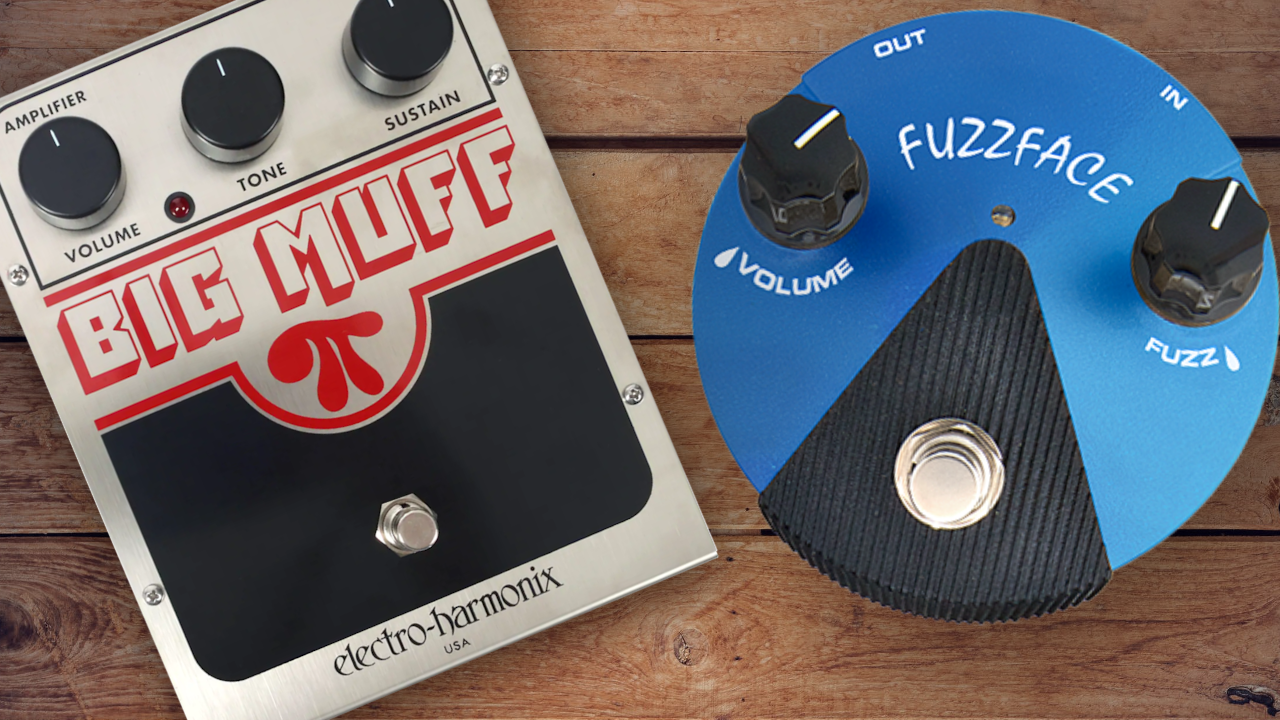
Here we have two classic fuzz pedals with long histories, legendary users and distinctive sounds: the Fuzz Face is gnarly, expressive and responsive to player dynamics. The Big Muff is smooth, saturated, but less dynamic and flexible.
At the circuit level, they have less in common than you might expect. First of all – how do you define a fuzz? If the answer is the common 'transistors pushed until they clip', then the Big Muff might not even qualify. Its carefully designed clipping is soft-clipping like an overdrive, with two cascaded stages.
Clearly though, if you trust your ears, they're both fuzzes, so let's skip the semantics and dive right in and see which pedal is right for you...
Big Muff vs Fuzz Face: At a glance
Electro-Harmonix Big Muff Pi
- Bypass: True Bypass
- Power: 9V DC
- Controls: Volume, Tone, Sustain
- Contact: Electro-Harmonix
Dunlop Fuzz Face FFM1
- Bypass: True bypass
- Power: 9V DC
- Controls: Volume, Fuzz
- Contact: Dunlop
Big Muff vs Fuzz Face: history and versions
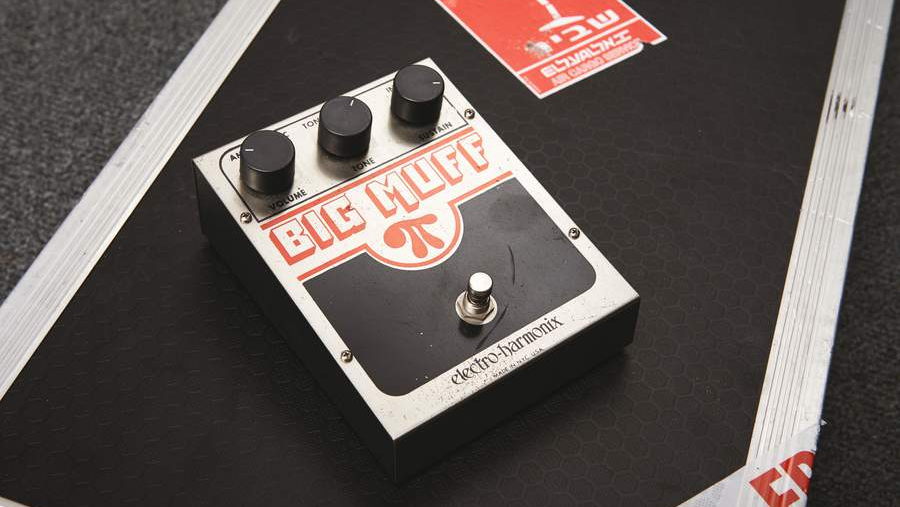
Big Muff
How long do you have? The Big Muff has probably the single most complex production history of any pedal. Still, the key models are pretty distinctive.
The Big Muff was released in 1969. EHX founder Mike Matthews wanted to release a three-knob fuzz to build on previous successes. Their unrelated Muff Fuzz and LPB-1 boost had sold well, so he enlisted Bell Labs engineer Bob Myer to design this new fuzz. The pedal that resulted was the Big Muff, a quantum leap in design from many contemporary circuits. It was more stable and predictable, while still putting out huge amounts of saturation.
A key early version was the so-called Triangle, named for its control layout. Slightly after came the Ram's Head, named for the logo on the bottom right. There were additional Ram's Head versions, usually referred to by the color of the screen print on the front, such as the Violet Ram's Head. At this point, the Muff moved to the three controls in a line layout that would stick for NYC Muffs.
In the late ’70s, EHX released the op-amp Big Muff. Although it carried the same name and same enclosure as the NYC Muff, it's a completely redrawn circuit. Gone are the cascading transistor stages in favor of a multi-stage op-amp design with six diodes in a soft-clipping layout. The result is a very different kind of clipping to the original.
Get The Pick Newsletter
All the latest guitar news, interviews, lessons, reviews, deals and more, direct to your inbox!
EHX went under in 1982, which further complicated the pedal's history. Several versions were built in Russia starting in the early ’90s. These included the Tall Font, Civil War, Green, and Black versions. Each sounds very different to the connoisseur, but there's a general trend towards fuller bass and a thicker low-mid.
Confusingly, NYC production re-started during this period, resulting in yet another version of the Big Muff.
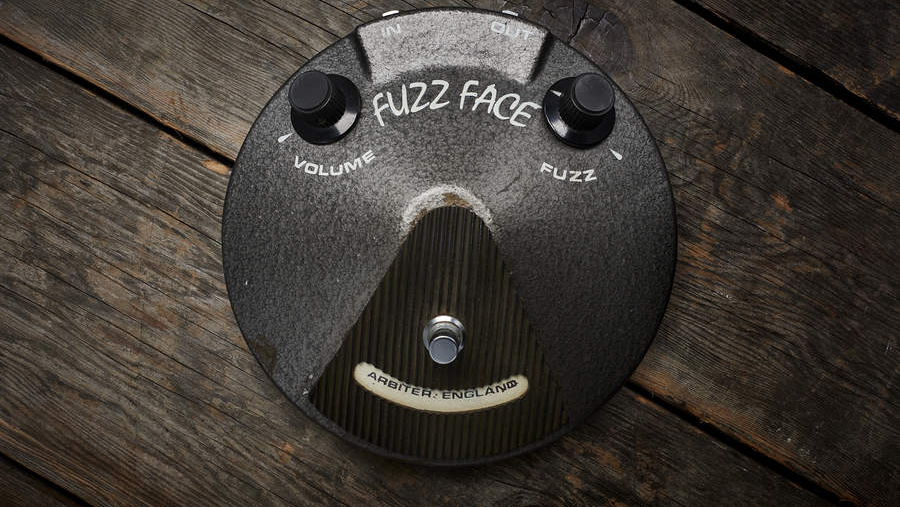
Fuzz Face
While the history of the Fuzz Face isn't nearly as complex as the Big Muff, there's still a fair bit going on. There are two main versions, as well as a few key eras of manufacture.
The pedal was created by Ivor Arbiter in the mid ’60s, a period which saw a Cambrian explosion of distortions and fuzzes. Many fuzzes had similarities in topology, and the Fuzz Face isn't exempt, being a shunt-series amplifier that resembles the Sola Sound Mark 1.5 Tone Bender.
The unusual enclosure was inspired by a mic stand. Supposedly, Arbiter wanted to build an integrated stand for guitarists who sang, but this never saw the light of day. The controls were widely spaced to potentially leave room for a central vertical post, and this resembled a face. The rest is history.
First released by Arbiter in 1966, there were two main versions in terms of internal components. There was a germanium transistor version, and a later silicon transistor version. The pedal was issued by a number of companies, Arbiter initially, then Dallas Arbiter, Dallas, CBS/Arbiter, and Dunlop. The Arbiter originals used NKT275 germanium transistors, but later Fuzz Faces moved to more temperature-stable silicon transistors, which were the norm after manufacturing moved to the US.
The story goes that Hendrix would go into a music store and 'audition' Fuzz Faces until he found one that he liked. Whether due to availability or stability, he did apparently make the switch to silicon Fuzz Faces.
Nevertheless, the germanium sound is the classic Fuzz Face tone. Few units after the originals were as sought after, and greater susceptibility to picking up AM radio on silicon models caused on-stage issues for some artists. After Dunlop took over the name in 1993, Arbiter did a final run using AC128 transistors.
Luckily for modern guitarists, that wasn't the end of the story. Several modern Dunlop Fuzz Faces cover the two transistor types, as well as signature boxes.
Big Muff vs Fuzz Face: sound
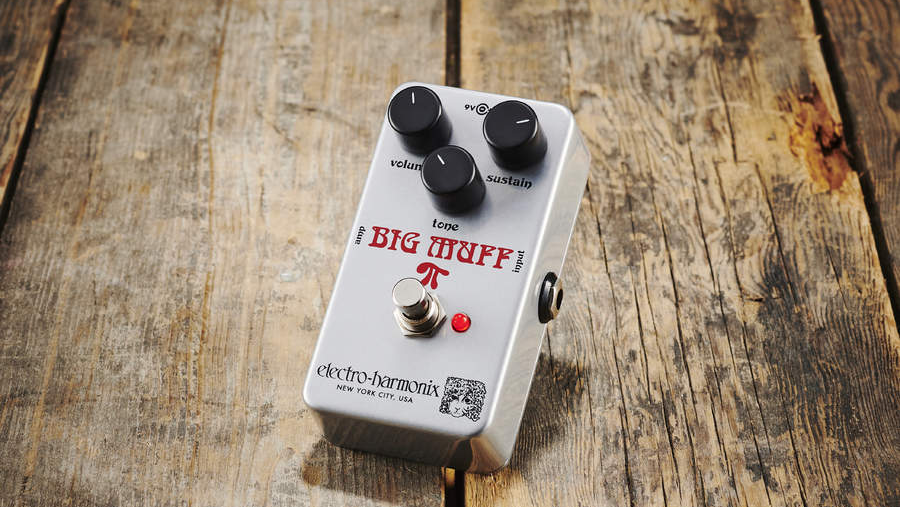
Big Muff
The Big Muff is often described as 'violin-like', but that's not quite it. The stacked amplifier and clipping stages result in a smooth, square-wave fuzz, where the sustain control only really has one setting – all the way up. As a result, notes sustain seemingly forever, and it pairs well with reverbs and delays.
The Big Muff is scooped in the mids, with a notch caused by the pivot point of its tone control. The tone pot is passive, but dynamic. Taming treble results in a slight bass boost which, combined with the 1kHz notch, is one of the most easily recognisable hallmarks of the pedal.
There are so many owners of the Big Muff that it's easy to describe it in terms of which artists have used it. The blown-out, bass-heavy fuzz of the Russian Big Muff is the sound of various bands and tracks. Listen to the first album by Amplifier, the song 100% by Sonic Youth, or early Black Keys.
The Ram's Head Big Muff and Triangle Muff are often associated with Dinosaur Jr. However, J. Mascis has used a lot of different fuzz boxes over the years. That, plus very tight control over their live and studio tone, means that assuming their tone is accessible with just a Big Muff is a mistake.
One of the biggest issues with the Big Muff is that it sounds amazing and huge in a small concrete-box practice space, but gets lost live, or on record. This is often remarked on, even by its greatest fans. We've heard it described as the 'Big Fizz', and the 'Hoover' amongst other less polite names. Many players end up heavily EQ'ing it, or stacking it with other pedals to make it work.
One of the most common tricks is to stack it with a boost to make it cut through a band mix better for solos. A good choice is a pedal like a clean boost or simple distortion like the MXR Distortion+. Another pairing is with a Tube Screamer. The TS adds additional compression and cancels out the mid-scoop of the Big Muff with its own mid bump.
The op-amp version of the Big Muff partially addresses these issues. It's punchier, while still being just as compressed, and somehow sounds even more saturated as a result.
In terms of signature Big Muff tones, the most famous Big Muff album has to be Smashing Pumpkins' 1993 opus Siamese Dream. While guitarists Billy Corgan and James Iha owned any number of obscure fuzz pedals, their weapon of choice was the op-amp Big Muff.
Finally, the base NYC Muff may not be as popular as other versions, but it's still been on more records than we can count. Mudhoney's Superfuzz Bigmuff, anybody?
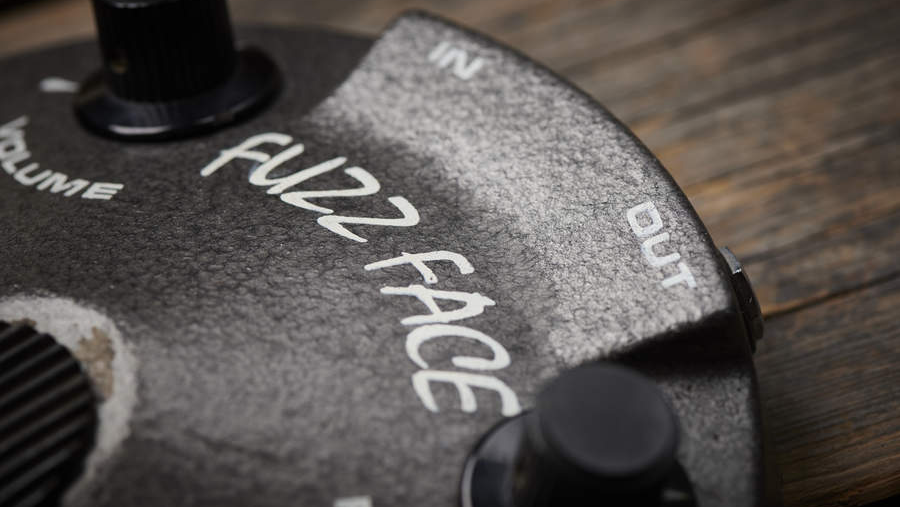
Fuzz Face
There are two classic Fuzz Face tones that listeners have heard countless times. One of these is a totally blown-out fuzz tone, with the gain control maxed out, and heavy, wooly clipping.
The second is a much smoother, more dynamic lead tone, with player dynamics preserved. As a player, this is one the most remarkable things about the Fuzz Face.
The explanation is its low input impedance. What this means in practice is that it's a very dynamic pedal, hugely sensitive to the input from the guitar. It can clean up using the guitar's volume knob, or indeed be pushed into breakup if set up to leave part of a turn remaining. It's this quality that is particularly appealing to blues players.
That's not all, because the pedal has one more trick up its sleeve – stacking with other pedals. Bear in mind when stacking that its input impedance is crucial to the way that it interacts with the guitar. Still, if using your volume pot to clean it up (or vice versa) isn't a trick you need, then the Fuzz Face is a pedal that can react explosively to a hotter input.
Some care is needed, however. Buffered pedals or a standalone buffer has an outsized impact on the tone of the Fuzz Face. If you're building a pedalboard around a Fuzz Face, then pedals in front being true bypass is important. As a rule of thumb, pedals like the Cry Baby wah, which suck tone, should go after. That said, Hendrix had his in front, so let your ears be the guide.
Big Muff vs Fuzz Face: which one should you pick up?
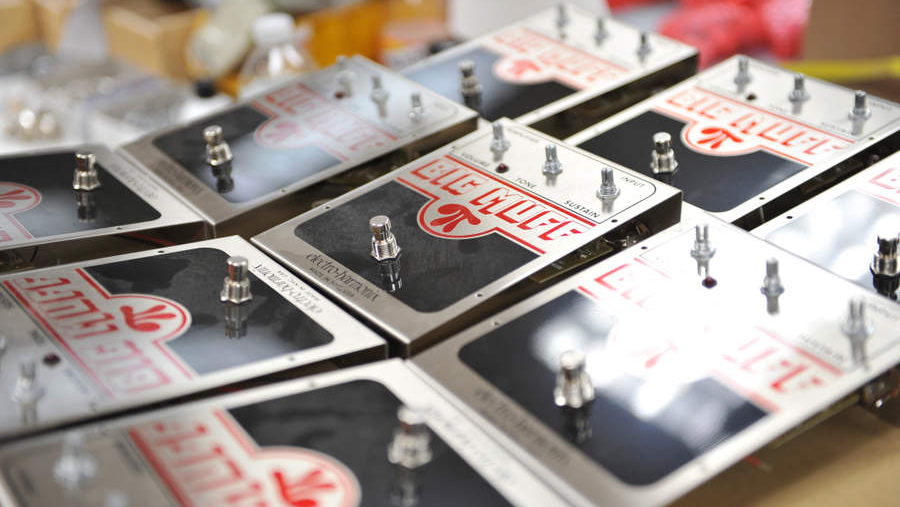
Big Muff
Every player should own a Big Muff, and gig with it at least once in their life. Bonus points if it's one of the doorstop, impractical vintage Muffs. Besides anything else, the sheer size of those older pedals is a vibe in and of itself.
The Big Muff is tailor-made for underground shows, as the smaller the space, the more crammed-in, the more impactful it is. When you step on it and the jetplane takes off, you'll instantly understand how it's carried bands from underground to mainstream so many times over the years.
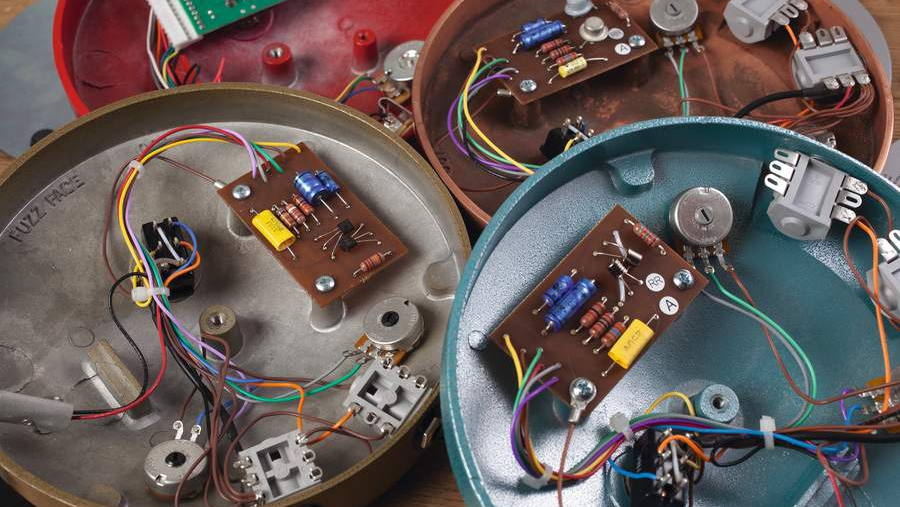
Fuzz Face
There's a reason that the pedal has been so enduring. It's right at the top of a family tree of fuzz that includes much more out-there units like the Fuzz Factory, but it all starts here. The Fuzz Face is flexible and articulate in a way that few pedals are, leaving plenty of space for the player.
Besides that, it's also a very simple pedal, hailing as it does from the dawn of fuzz. The circuit contains just over ten components, and is the perfect place to start building DIY pedals. Doing so will be as inspirational as the end pedal itself, but also offer opportunities to mod the circuit. In doing so, you'll see why the Fuzz Face has been the basis for so many successor pedals, as well as so frequently modded.
Finally, if DIY isn't your bag, with the plethora of reissues, micro clones and all, it's possible to pick up a Fuzz Face-style pedal very cheaply.
Alex Lynham is a gear obsessive who's been collecting and building modern and vintage equipment since he got his first Saturday job. Besides reviewing countless pedals for Total Guitar, he's written guides on how to build your first pedal, how to build a tube amp from a kit, and briefly went viral when he released a glitch delay pedal, the Atom Smasher.
“Sonically excellent… we found that it could be a viable substitute for our vintage 1970s pedals”: Hamstead x That Pedal Show Redwing Analogue Stereo Modulator review
“The original Jordan Boss Tone was probably used by four out of five garage bands in the late ’60s”: Unpacking the gnarly magic of the Jordan Boss Tone – an actual guitar plug-in that delivers Dan Auerbach-approved fuzz


![John Mayer and Bob Weir [left] of Dead & Company photographed against a grey background. Mayer wears a blue overshirt and has his signature Silver Sky on his shoulder. Weir wears grey and a bolo tie.](https://cdn.mos.cms.futurecdn.net/C6niSAybzVCHoYcpJ8ZZgE.jpg)

![A black-and-white action shot of Sergeant Thunderhoof perform live: [from left] Mark Sayer, Dan Flitcroft, Jim Camp and Josh Gallop](https://cdn.mos.cms.futurecdn.net/am3UhJbsxAE239XRRZ8zC8.jpg)






